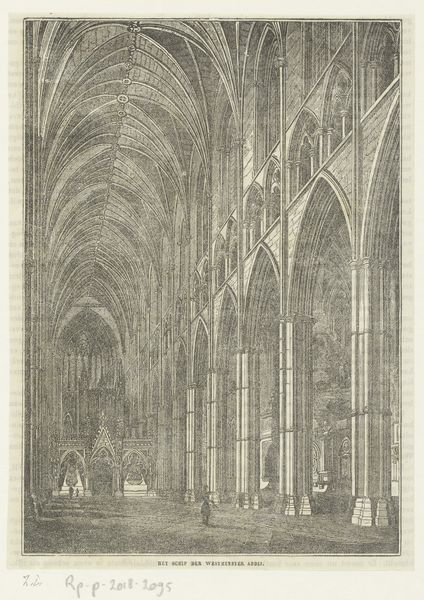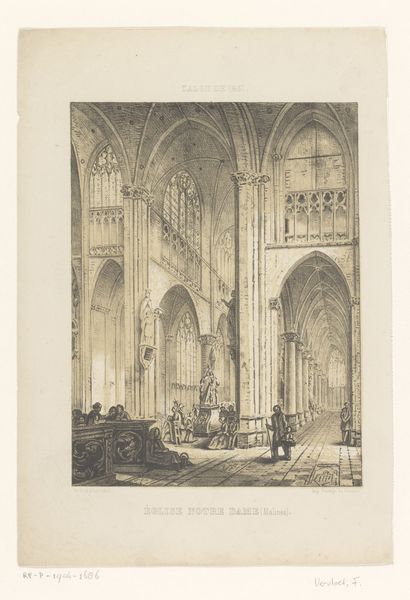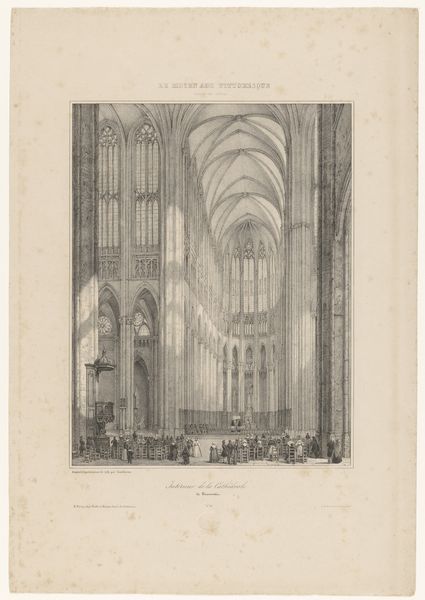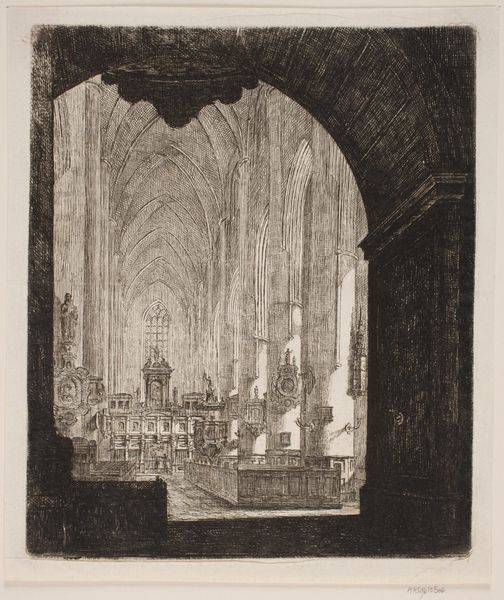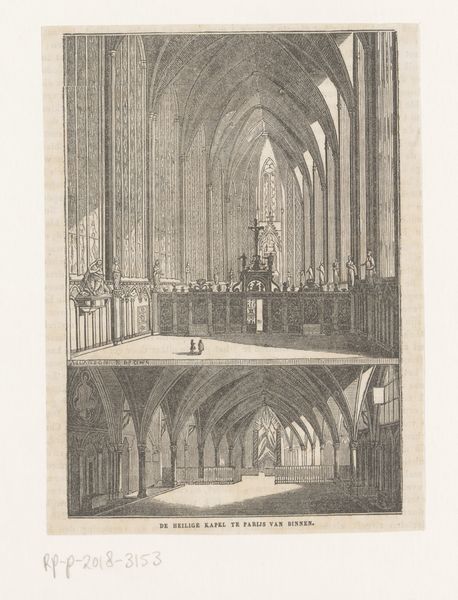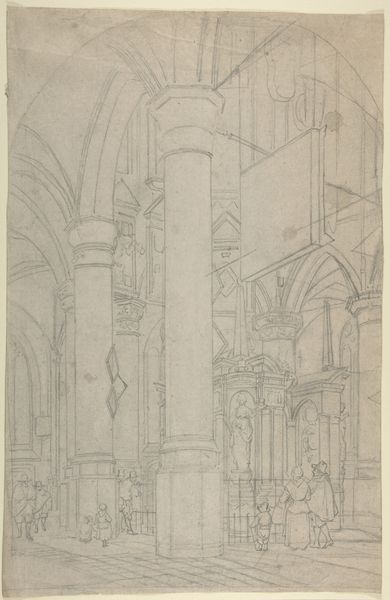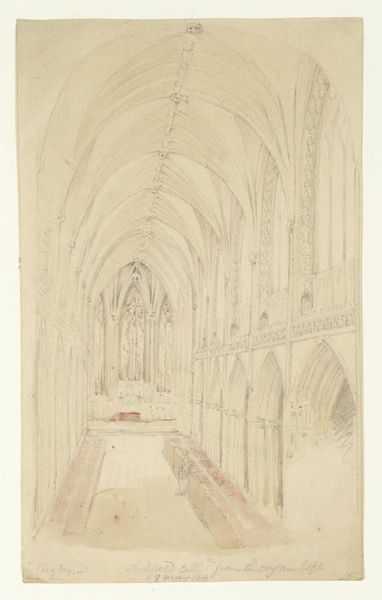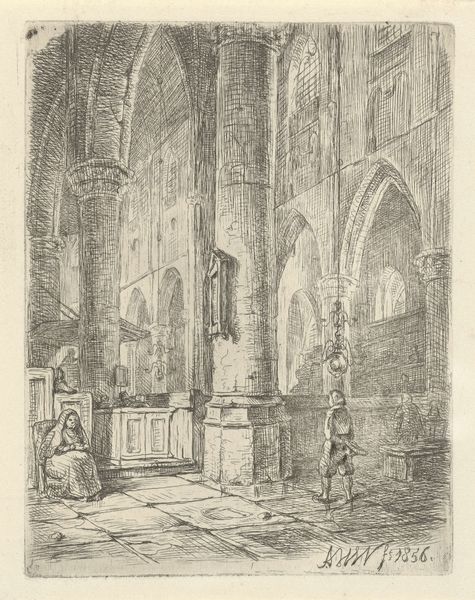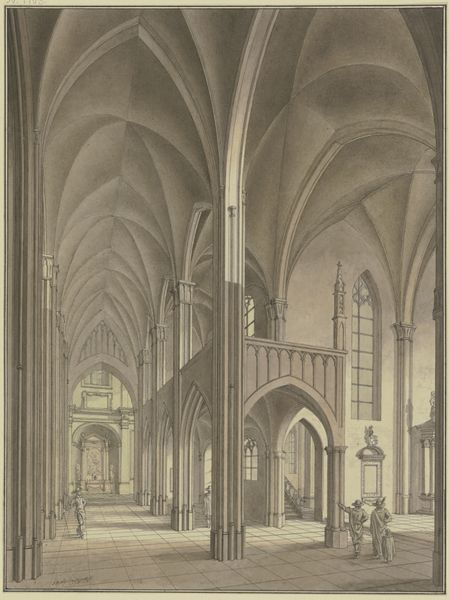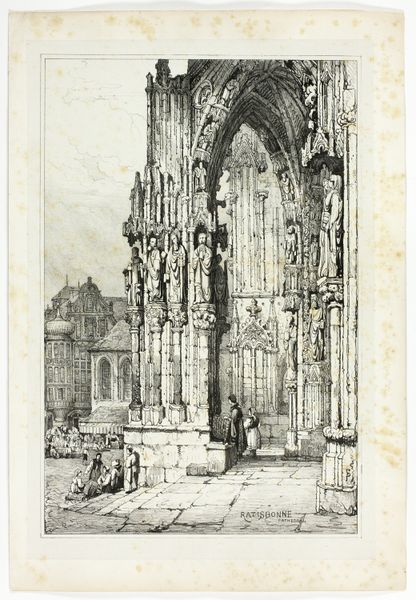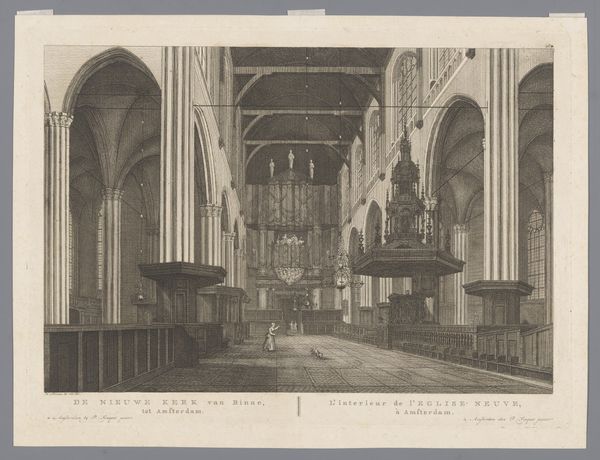
drawing, print, etching, ink
#
drawing
#
medieval
#
pen drawing
# print
#
etching
#
form
#
ink
#
line
#
cityscape
Dimensions: image: 12.2 × 18.5 cm (4 13/16 × 7 5/16 in.) plate: 14.9 × 20.8 cm (5 7/8 × 8 3/16 in.) sheet: 21.8 × 28.4 cm (8 9/16 × 11 3/16 in.)
Copyright: National Gallery of Art: CC0 1.0
Editor: This is Maxime Lalanne's "Church Interior," created around 1885 using etching and ink. I'm struck by how the intricate linework manages to convey such a massive sense of space. How do you interpret this work in terms of its social or historical context? Curator: This print invites us to consider the role of religious institutions in shaping social order during the late 19th century. Notice the imposing architectural style—a clear nod to medieval aesthetics. But I think it's crucial to examine whose stories were silenced by the grandiosity of the church itself. Do you see a particular absence represented within these echoing spaces? Editor: Well, the figures are so small compared to the architecture; almost anonymous. Is that deliberate, maybe commenting on individual versus institution? Curator: Precisely. And further, where are the women? Where are the working class? Lalanne presents a vision of organized religion, but from whose perspective? Is he celebrating the divine or subtly critiquing power structures embedded within these hallowed halls? It really emphasizes the power dynamics at play, doesn't it? Editor: That's a fascinating point. It almost feels like the church's physical dominance mirrors a kind of societal control. I hadn’t considered the underrepresentation within the representation itself. Curator: Exactly! By paying attention to absences, to who *isn't* depicted, we can better understand the dominant narratives being reinforced and, perhaps more importantly, whose voices were being marginalized at that time and still are today. Editor: This has given me so much to think about, looking beyond the surface to unearth hidden social narratives. Curator: Absolutely, art is always in dialogue with society, so exploring these contexts enables the work to resonate beyond its surface.
Comments
No comments
Be the first to comment and join the conversation on the ultimate creative platform.
